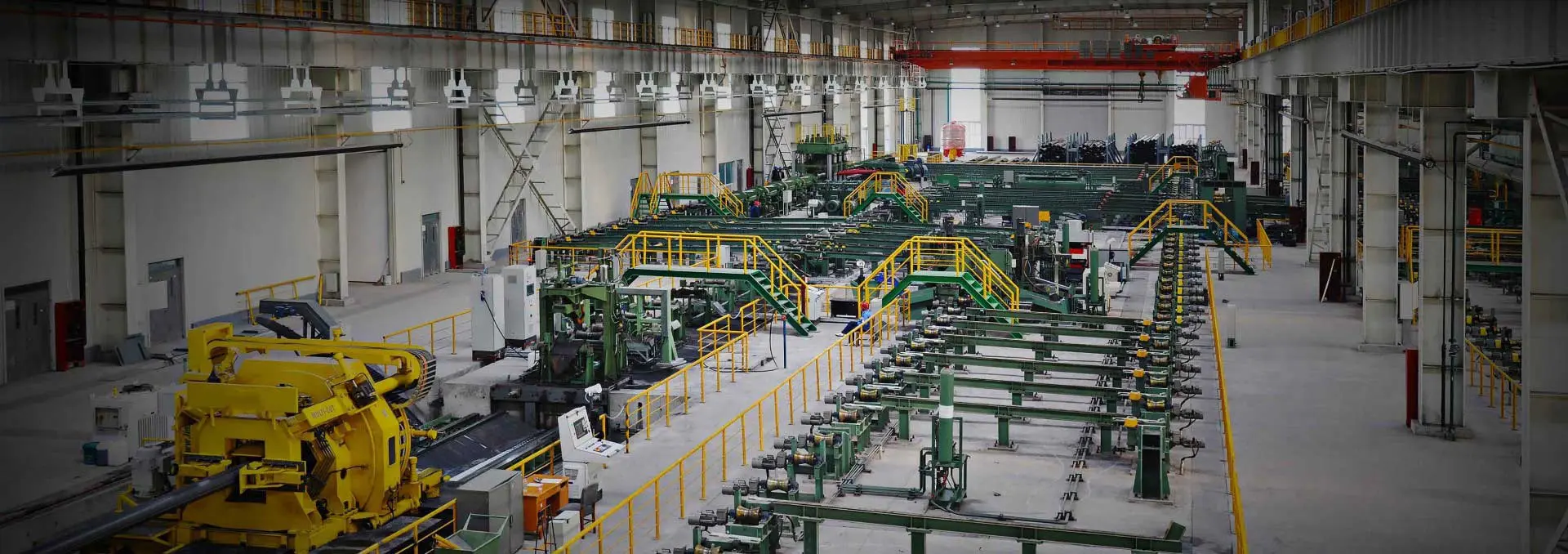Hot rolled seamless steel pipes are produced through a series of carefully controlled processes that transform a solid round billet into a hollow, seamless tube. The main steps involved in this production process are as follows.
1. Selection and Heating of Billets:
Material Selection: The process begins with selecting high-quality round steel billets as raw material.
Heating: The billets are then heated in a rotary hearth furnace to a temperature that is suitable for hot rolling, typically between 1,200°C and 1,300°C.
2. Piercing:
Perforation: The heated billet is fed into a piercing mill where a mandrel or piercing tool is used to create a hollow center. This step transforms the solid billet into a rough hollow tube.
Rotary Piercing: The billet is rotated and pressed between two rolls, with the mandrel in the center, to form a cavity. The process ensures that the interior and exterior surfaces are smooth.
3. Rolling:
Elongation: The rough hollow tube is elongated and reduced in diameter and wall thickness by passing it through a series of rolling stands.
Plug Mill or Mandrel Mill: In a plug mill process, a stationary plug is inserted into the hollow tube, and the tube is rolled over it to elongate and refine its dimensions. In a mandrel mill process, a long mandrel bar is inserted into the hollow tube, and the tube is passed through several rolling stands to achieve the desired size.
4. Sizing and Reducing:
Sizing Mill: The tube is passed through a sizing mill to achieve precise dimensions and uniform wall thickness.
Reducing Mill: In some cases, the tube may go through a reducing mill to further refine the diameter and thickness to meet specific requirements.
5. Cooling:
Air Cooling: The hot rolled tube is then allowed to cool in open air or through controlled cooling methods to stabilize its structure and properties.
6. Cutting and Finishing:
Cutting: After cooling, the seamless steel pipes are cut into the required lengths using a hot saw or abrasive cutting machine.
Finishing: The pipes undergo various finishing processes such as straightening, descaling (removing surface oxide scale), and possibly additional heat treatments to achieve the desired mechanical properties.
7. Inspection and Testing:
Non-Destructive Testing: The finished pipes are subjected to non-destructive tests such as ultrasonic testing or radiographic testing to detect any internal or surface defects.
Dimensional Inspection: The pipes are also inspected for dimensional accuracy, surface quality, and overall conformity to specifications.
8. Marking and Packaging:
Marking: Each pipe is marked with information such as material grade, size, and production batch number for traceability.
Packaging: Finally, the pipes are bundled, packaged, and prepared for shipment to customers.
Key Points of the Hot Rolled Seamless Steel Pipe Production Process
- High Temperature: The entire process is carried out at high temperatures, which helps in shaping and forming the steel.
- Seamlessness: The absence of seams enhances the pipe's strength, pressure resistance, and overall mechanical properties.
- Quality Control: Strict quality control measures are implemented throughout the production process to ensure that the final product meets industry standards and customer requirements.
Hot rolled seamless steel pipes are widely used in various applications due to their superior mechanical properties, uniform structure, and ability to withstand high pressures and temperatures.

 English
English Español
Español




 Tel : +86-18565811709
Tel : +86-18565811709 Email :
Email : 
 News
News




